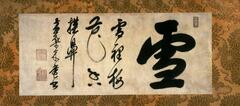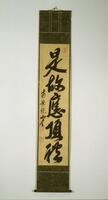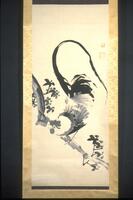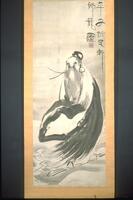13 UMMA Objects
13 UMMA Objects

Japanese (Japanese (culture or style))
Tsuba (sword guard) with design of Kanzan (Chinese, Han Shan) and Jittoku (Chinese, Shihde), two Zen eccentrics
1700 – 1732
Gift of Mr. and Mrs. Robert T. Weston
1978/2.5

Muan Xingtao
Snow: calligraphy scroll
1655 – 1675
Museum purchase made possible by the Margaret Watson Parker Art Collection Fund
1986/1.205

Yueshan Daozong (J. Etsuzan Dôshû; Ôbaku Etsuzan)
“Heads should be bowed to him,” quotation from the Avalokitesvara Sutra
1660 – 1709
Gift of Marvin Eisenberg in tribute to Richard and Vee Tsung Ling Edwards
1999/1.105

Tetsugen
And Naturally Ripens into Fruit
1660 – 1682
Museum purchase made possible by the Margaret Watson Parker Art Collection Fund
1968/2.19

Yiran Xingrong (J. Itsunen)
Linji, from triptych of Three Zen Masters: Linji, Bodhidharma and Deshan
1658
Museum purchase, Acquisition Fund
1975/2.183

Itō Jakuchū
Rooster on a Branch
18th century
Museum purchase made possible by the Margaret Watson Parker Art Collection Fund
1965/1.156

Yiran Xingrong (J. Itsunen)
Deshan, from triptych of Three Zen Masters: Linji, Bodhidharma and Deshan
1658
Museum purchase, Acquisition Fund
1975/2.181

Yiran Xingrong (J. Itsunen)
Bodhidharma, from triptych of Three Zen Masters: Linji, Bodhidharma and Deshan
1658
Museum purchase, Acquisition Fund
1975/2.182
Loading…




